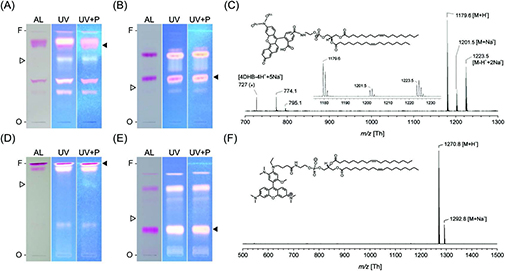PUBLICATION: Lipid-conjugated fluorescent pH sensors
Lipid-conjugated fluorescent pH sensors for monitoring pH changes in reconstituted membrane systems
GC Kemmer, SA Bogh, M Urban, MG Palmgren, T Vosch, J Schillerd and TG Pomorski. Analyst, 2015,140, 6313-6320. DOI: 10.1039/C5AN01180A

Purification of lipid-conjugated pH-sensors
Abstract
Accurate real-time measurements of the dynamics of proton concentration gradients are crucial for detailed molecular studies of proton translocation by membrane-bound enzymes. To reduce complexity, these measurements are often carried out with purified, reconstituted enzyme systems. Yet the most paramount problem to detect pH changes in reconstituted systems is that soluble pH reporters leak out of the vesicle system during the reconstitution procedure. This requires loading of substantial amounts of pH-sensors into the lumen of unilamellar liposomes during reconstitution. Here, we report the synthesis and detailed characterisation of two lipid-linked pH sensors employing amine-reactive forms of seminaphthorhodafluors (SNARF®-1 dye) and rhodamine probes (pHrodo™ Red dye). Lipid-conjugation of both dyes allowed for efficient detergent-based reconstitution of these pH indicators into liposomes. Vesicle-embedded pHrodo™ displayed excellent photostability and an optimal pH-response between 4 and 7. The suitability of the lipid-linked pHrodo™ probe as a pH reporter was demonstrated by assaying the activity of a plant plasma membrane H+-ATPase (proton pump) reconstituted in proteoliposomes.
